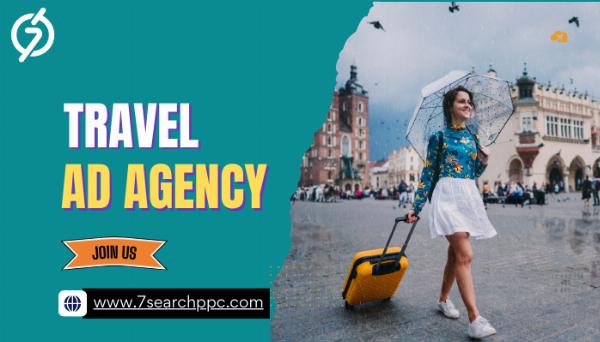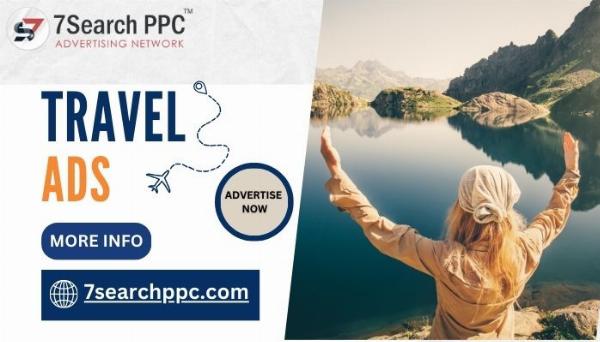 Schema + Rich Snippets – Dominate Search with Visual Results!
Schema + Rich Snippets – Dominate Search with Visual Results!
Travel Ads | Travel Advertising Network | Online Travel Ads
Written by Travel Advertising » Updated on: June 17th, 2025

Travel advertisements are enticing, capturing our imaginations with stunning visuals of pristine beaches, lush mountains, and luxurious accommodations. These ads promise the perfect getaway, often at surprisingly affordable prices. However, for many travelers, the reality of their vacations doesn't always match the idyllic images presented in these ads. So, why are travel ads always too good to be true? This article will explore the world of travel advertising, the psychology behind it, the marketing strategies employed, and how consumers can navigate these alluring but sometimes deceptive messages.
The Allure of Travel Ads
The Dream of Escape
Travel ads tap into a universal human desire—the need to escape from the mundane routines of daily life. These ads present travel as the ultimate form of liberation, offering a chance to explore new places, experience different cultures, and break free from the constraints of everyday responsibilities. The images of far-flung destinations, serene beaches, and adventurous activities create an emotional pull that is hard to resist.
Visual Seduction
The visual component of travel ads is one of their most powerful tools. Stunning photography, vibrant colors, and carefully curated imagery are used to create a sense of wonder and excitement. The goal is to evoke emotions such as happiness, relaxation, and adventure, making the viewer long for the experiences depicted. These images are often enhanced with filters, edited to perfection, or shot in ideal conditions that may not accurately represent the destination.
The Promise of Value
Many travel ads emphasize affordability, promoting deals and discounts that seem too good to pass up. Phrases like "limited time offer," "exclusive deal," and "best price guaranteed" are commonly used to create a sense of urgency. The promise of luxury at a fraction of the usual cost is a powerful motivator, driving consumers to book trips based on the perceived value rather than the actual experience.
The Psychology Behind Travel Ads
The Power of FOMO (Fear of Missing Out)
Travel ads frequently leverage the psychological phenomenon known as FOMO, or Fear of Missing Out. By presenting images of people enjoying themselves in exotic locations, these ads create a sense of urgency and competition. The viewer is led to believe that if they don't take advantage of the opportunity now, they might miss out on an incredible experience that others are already enjoying. This fear drives impulsive decisions, often without fully considering the realities of the advertised destination.
Social Proof and Aspirational Living
Social proof is another psychological tactic used in travel advertising. Ads often feature testimonials, reviews, and endorsements from satisfied customers or influencers. These endorsements are designed to make the viewer believe that if so many others have had positive experiences, they will too. Additionally, the lifestyle portrayed in these ads is often aspirational—luxurious resorts, gourmet dining, and exclusive experiences that appeal to those who want to elevate their status or indulge in a lifestyle they might not normally afford.
The Halo Effect
The halo effect is a cognitive bias where the perception of one positive trait influences the overall impression of a product or service. In travel ads, this effect is created by focusing on the most attractive aspects of a destination—such as its natural beauty, cultural attractions, or luxurious accommodations—while downplaying or omitting any negative aspects. This selective presentation leads viewers to form an idealized image of the destination, which may not align with reality.
Marketing Strategies in Travel Advertising
The Art of Storytelling
Storytelling is a key element in travel advertising. Marketers craft narratives that go beyond just showcasing a destination; they tell stories about the experiences that travelers will have, the memories they'll create, and the emotions they'll feel. These stories are often highly personalized, designed to make the viewer imagine themselves in the setting. Whether it's a romantic getaway, a family adventure, or a solo journey of self-discovery, the story is crafted to resonate with the target audience's desires and aspirations.
Targeted Advertising and Personalization
With the rise of digital marketing, travel ads have become increasingly personalized. Companies use data analytics and algorithms to target specific demographics with tailored ads that align with their interests, search history, and online behavior. This level of personalization makes the ads more relevant and persuasive, increasing the likelihood of conversion. However, it also raises concerns about privacy and the ethical implications of using personal data for targeted marketing.
The Role of Influencers
Influencers play a significant role in modern travel advertising. These individuals, who often have large followings on social media platforms, are paid to promote destinations, hotels, and travel experiences. Their posts are designed to look authentic and relatable, making them more effective than traditional ads. However, the line between genuine endorsement and paid promotion can be blurry, leading consumers to trust influencers' recommendations without realizing they are part of a marketing strategy.
The Reality Behind the Ads
The Fine Print
One of the most common ways travel ads can be misleading is through the fine print. The headline might advertise an unbelievable deal, but the terms and conditions often reveal that the offer is not as good as it seems. Hidden fees, blackout dates, and restrictions on travel times are common, and they can significantly increase the cost of a trip. Additionally, the advertised price may only apply to a limited number of bookings or require a minimum stay, making it difficult to actually secure the deal.
Misleading Imagery
As mentioned earlier, the images used in travel ads are often enhanced or carefully selected to present the destination in the best possible light. However, the reality may be quite different. For example, a beach that appears secluded and pristine in the ad might be crowded and less appealing in person. Similarly, a hotel room might look spacious and luxurious in photos but turn out to be small and underwhelming. Travelers often find that the actual experience doesn't live up to the expectations set by the ads.
Overpromising and Under Delivering
Another common issue with travel ads is overpromising and under delivering. Ads often highlight the most exceptional aspects of a destination, while omitting any potential downsides. For example, an ad might emphasize the beautiful weather in a tropical destination without mentioning the possibility of rainy seasons or hurricanes. Similarly, ads for cultural experiences may gloss over the challenges of navigating language barriers or dealing with different customs. As a result, travelers may feel disappointed or even misled when their experience doesn't match the idealized version presented in the ads.
The Future of Travel Advertising
Transparency and Authenticity
As consumers become more aware of the potential pitfalls of travel ads, there is a growing demand for transparency and authenticity in advertising. Some companies are responding by being more upfront about what they offer, including realistic images and honest descriptions of their services. This shift towards transparency is also reflected in the rise of user-generated content, where travelers share their own unfiltered experiences on social media platforms. Companies that embrace this trend and prioritize honesty over hype may gain a competitive advantage in the long run.
The Impact of Technology
Advancements in technology are also shaping the future of travel advertising. Virtual reality (VR) and augmented reality (AR) are being used to create immersive experiences that allow consumers to explore destinations before they book. These technologies offer a more accurate representation of what travelers can expect, helping to bridge the gap between advertising and reality. Additionally, AI and machine learning are improving the personalization of travel ads, making them more relevant and useful to consumers.
Ethical Considerations
As the travel industry continues to evolve, ethical considerations are becoming increasingly important. Issues such as over-tourism, environmental impact, and cultural sensitivity are gaining attention, and consumers are becoming more conscious of the ethical implications of their travel choices. Travel companies that prioritize sustainability, responsible tourism, and ethical travel advertising campaign practices may appeal to this growing segment of conscious consumers. In turn, this could lead to a shift in the way travel ads are created, with a greater emphasis on promoting responsible and sustainable travel options.
Conclusion
Travel ads have a powerful influence on our perceptions and decisions, but they often present an idealized version of reality that can lead to disappointment. By understanding the psychology behind these ads, the marketing strategies used, and the potential pitfalls, consumers can make more informed decisions and set realistic expectations for their travel experiences. While travel ads will likely always aim to entice and inspire, the future of travel advertising may see a shift towards greater transparency, authenticity, and ethical considerations, offering a more honest and responsible approach to promoting travel. In the meantime, travelers can protect themselves by doing thorough research, seeking out authentic experiences, and remembering that if something seems too good to be true, it probably is.
FAQs
Why do travel ads always look better than the actual destination?
Ans: Travel ads often use enhanced images, selective angles, and ideal lighting to present destinations in the best possible way. These visuals are designed to evoke emotions and create a sense of desire, but they may not always reflect the reality of the location, which can include crowds, weather variations, and less-than-perfect conditions.
Are the prices in travel ads always accurate?
Ans: Not always. The prices advertised are often "starting from" rates that may only apply to a limited number of bookings or specific dates. Additional costs such as taxes, fees, and surcharges can significantly increase the total price. It’s essential to read the fine print and understand what is included in the advertised price.
Why do travel ads use phrases like 'limited time offer' or 'exclusive deal'?
Ans: These phrases are used to create a sense of urgency and drive immediate action. The idea is to make the viewer feel that they need to act quickly to secure a great deal, even if the offer may not be as exclusive or limited as it seems. This marketing tactic leverages the Fear of Missing Out (FOMO) to encourage bookings.
Can I trust influencer endorsements in travel ads?
Ans: Influencer endorsements can be trustworthy, but it's important to remember that many influencers are paid to promote certain destinations or services. While their experiences may be genuine, they may also be influenced by the compensation they receive. It’s a good idea to cross-reference multiple sources before making travel decisions based on influencer recommendations.
Note: IndiBlogHub features both user-submitted and editorial content. We do not verify third-party contributions. Read our Disclaimer and Privacy Policyfor details.
Copyright © 2019-2025 IndiBlogHub.com. All rights reserved. Hosted on DigitalOcean for fast, reliable performance.













